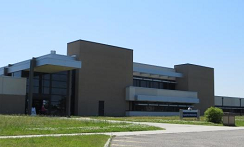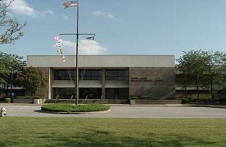Project Overview
Abraxas Energy Consulting conducted an energy assessment for Portsmouth Naval Medical Clinic in Portsmouth, Virginia in November 2013. There are 2 buildings in the scope of this project at this facility: a 121,236 square foot medical clinic and a 67,400 square foot dental clinic. The goal of the audit was to assist Portsmouth in identifying and developing energy investment initiatives that achieved the federally required energy reductions.
The Solution
The energy assessment was performed in two phases, a Preliminary Assessment (Phase 1) and a Scoping Energy Assessment (Phase 2). Phase 1 consisted of a utility bill audit which established a baseline for energy and water usage and facilities benchmarking using energy Star Portfolio Manager. Twelve months of bills for water and gas, and electricity were used to conduct the audit. This generated a baseline for the energy/water/gas usage and utility costs, which was used in calculating potential energy savings. Energy Star scores were calculated as 7 for the medical clinic and 5 for the dental clinic and the goal after implementation of conservation measures was to reach a score of 75. The calculated HDDs and CDDs provided insight to potential energy conservation measures.
The second phase used on-site visits with the purpose of identifying and quantifying cost-effective energy efficiency measures, water conservation practices and renewable energy measures. During the on-site inspection all the relevant information on the existing building conditions was collected. This on-site assessment included reviewing building and equipment data, interviewing site personnel, observing energy related equipment operation, and conducting some limited site measurements. Based on the inspection and calculations eight ECMs were recommended, as well as a list of administrative and operational measures that could be also implemented.
The Results
The largest opportunities for savings were found on decentralizing the steam system and implementing a schedule for the HVAC system in both buildings. Other ECMs found, affecting both or only one of the analyzed buildings, were lighting controls and upgrades, addition of economizers to AHUs, installation of flow regulators in restroom faucets and installation of VFD on hot water pumps. Studies were also conducted into the feasibility of co-generation, renewable energy sources and retro-commissioning. These were preliminary assessments and based on the results, the incorporation of co-generation for the decentralization of the central steam plant in both buildings should be given further consideration. Renewable energy sources were not found to be cost effective. A full re-commissioning of the hospital building was highly recommended. The existing and proposed annual energy usage and cost for this project are shown below.
Benefits
When implemented, the ECMs (including a retro-commissioning based on the feasibility study) will save over $347,104 per year with a simple payback of 1.5 years. The list of measures is prioritized by simple payback such that short term investments are expected to be implemented first and longer term investments implemented last. Some interactive effects are accounted for in the calculation of energy savings such that if a different implementation sequence is followed the savings realized will vary to a degree. Total savings for electricity is 1,329,290 kWh/yr, for gas the savings is -118,178 Therm/yr (due to the usage increase by decentralizing the steam system), for steam/hot water savings is 9,972 MMBtu/yr and for water savings is 76 MGal/yr. Total energy savings results in a 9% reduction in energy intensity. All values were evaluated using bin simulations and spreadsheet calculations based upon standard energy savings estimating methods and known and assumed operating conditions. Various incentives were identified through utility companies and various federal programs.

